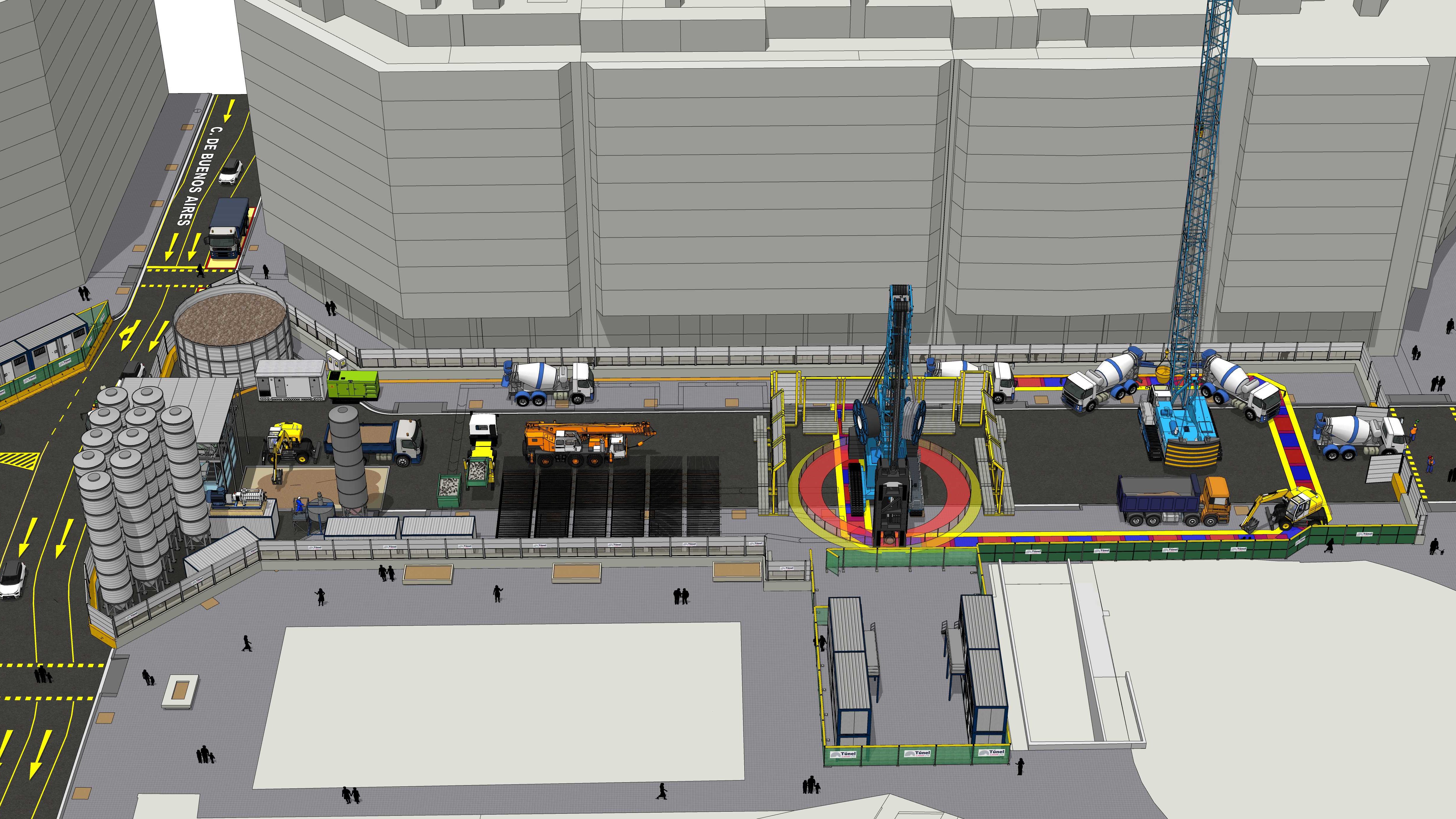The extension of the L8 is already underway. This project will deliver three new stations—Gràcia, Clínic, and Francesc Macià—and will upgrade the existing Espanya station to accommodate the new alignment and increased passenger flow.
Toni Julià Ventura, Project Manager for the joint venture—comprising Sacyr (27.5%), Ferrovial (27.5%), Copcisa (22.5%), and Copisa (22.5%)—describes the initiative, promoted by the Generalitat de Catalunya, as a key milestone for sustainable mobility in Barcelona.
“With 19 million annual users, it is one of the most socially and economically impactful projects included in the Generalitat’s Infrastructure Master Plan,” explains Julià.
The works are divided into two main lots: Lot 1 involves conventional excavation techniques, due to the complex web of existing infrastructure in the area—such as Metro Lines 1 and 3—which makes the use of a tunnel boring machine (TBM) unfeasible. The extension will run from the current terminus, beneath Plaça Espanya and its central fountain, through a sequence of shafts and mined galleries.
Lot 2 begins in the logistics zone of Gran Vía, which hosts the TBM launch shaft. From this point, a 3.7-kilometer tunnel will be driven to connect the new stations at Hospital Clínic, Francesc Macià, and Gràcia. Emergency exits will be constructed at Consell de Cent and Muntaner.
The project is currently in its early stages, with approximately 10% overall progress. To date, most of the utility diversions have been completed, and hydromill (hydrofresa) retaining walls for the Consell de Cent emergency exit have been executed. Construction of the TBM launch shaft walls is ongoing.
In the coming weeks, excavation of the deep retaining walls at Hospital Clínic and Francesc Macià stations—each exceeding 80 meters in depth—will begin. Meanwhile, the TBM components are undergoing detailed inspection before assembly within the shaft. An acoustic enclosure will be installed over the shaft to mitigate noise and environmental impact during tunneling.
Once the main tunnel is completed, cavern excavation will commence. As the TBM bore accommodates only the twin tracks, the cross-section will be expanded through sequential mined phases to form the platform waiting areas and emergency access routes.
Key Figures
• CO₂ Emissions Reduction: The extension between Plaça Espanya and Gràcia is expected to significantly reduce private vehicle use, saving CO₂ annually.
• Tunneling Scope: Includes 3,728 meters of TBM-driven tunnel, 378 meters of cavern excavation, and 260 meters of mined tunnel.
• Minimized Environmental Impact: The originally planned site footprint in Joan Miró Park has been reduced by 40%.
• Stations and Infrastructure: The project comprises three new stations (Gràcia, Clínic, Francesc Macià), the adaptation of Espanya station, modified interconnection corridors, and two emergency shafts.
• Contract Duration: The overall contract spans 58 months, divided into two main construction lots.
